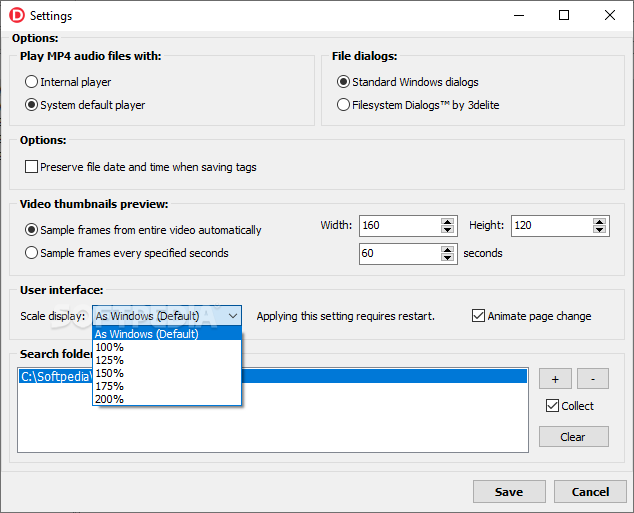

- #Wav tag editor mac os
- #Wav tag editor mp4
- #Wav tag editor software
- #Wav tag editor code
- #Wav tag editor windows
In 2012 the European Broadcast Union published a specification for the Carriage of Identifiers in the BWF. It was formally ratified as a standard in 2002 by the Audio Engineering Society (AES). It was introduced in 2004.Ĭart Chunk is a metadata format which was designed for WAV files used in the radio industry. It is more flexible than the Broadcast Audio Extension chunk and can hold more information. IXML is an XML based metadata format designed for BWF files. The specification for Extensible Metadata Platform (XMP), which was introduced by Adobe in 2001 and is now commonly used in JPEG images, also defines a way to write it into WAV files. Due to lack of standard, three ways for writing ID3v2 tag into WAV files emerged by different software, which cause a compatibility problem.
#Wav tag editor software
ID3v2 tag, which was introduced in 1998 and originally designed for MP3 files, can be written by some software into WAV files. BWF is essentially a WAV file with a Broadcast Audio Extension chunk (Bext) that can store metadata. In 1997 the European Broadcast Union published the specification of the Broadcast Wave Format (BWF) for the seamless exchange of audio material between different broadcast environments and between equipment based on different computer platforms. The original WAV specification which was published in 1991 defined an INFO List Chunk that can store information about the file such as Title, Artist, and Genre. Jump to list of software that support WAV & BWF metadata The following is a description of the different WAV metadata types, and the software that support them. Any well-behaved WAV reader is able to handle every WAV file even if it doesn't understand all the chunks it contains, in which case it simply ignores them. Contrary to popular misconception, adding metadata to WAV files does not break the format. WAV is based on the Resource Interchange File Format (RIFF), and made of chunks of data. These metadata types were introduced over the years into the WAV format, which is extensible by nature.
#Wav tag editor mp4
File Explorer has limited tag editing capabilities on MP4 and WMV files.WAV audio files can hold several metadata types.XnView – Available for Windows, Linux and OS X.IrfanView – Available for Windows, Linux and OS X.
#Wav tag editor windows


Supports embedded album art and auto-lyrics.
#Wav tag editor mac os
Available for FreeBSD, Linux, Mac OS and Windows. MusicBrainz Picard – Supports MP3, FLAC, Ogg, MP4, MPC, WMA, APE, OptimFROG, and WavPack.Kid3 – Supports MP3, MP2, FLAC, Ogg, MP4, MPC, WMA, AAC, Opus, Speex, TrueAudio, WavPack, WAV, AIFF, and tracker module (MOD, S3M, IT, XM) formats.Available for FreeBSD, Linux, Mac OS, and Windows. Ex Falso – Supports MP3, FLAC, Ogg, MP4, MPC, WMA, APE, MIDI, and WavPack.EasyTag – Supports MP3, MP2, FLAC, Ogg, MP4, Musepack (MPC), Monkey's Audio (APE), and WavPack formats.Media players generally have tag editing capabilities and are not included. Using something like MD5 is useful as a first pass to find exactly-identical files, but another, more advanced algorithm is required to find all items that would nonetheless be interpreted as identical by a human listener. In hash function, for audio identification, such as finding out whether an MP3 file matches one of a list of known items, one could use a conventional hash function such as MD5, but this would be very sensitive to highly likely perturbations such as time-shifting, CD read errors, different compression algorithms or implementations or changes in volume. Practical uses of acoustic fingerprinting include broadcast monitoring, identification of music and ads being played, peer-to-peer network monitoring, sound effect library management, and video identification. Depending upon the particular algorithm, acoustic fingerprints can be used to automatically categorize or identify an audio sample.
#Wav tag editor code
An acoustic fingerprint is a unique code generated from an audio waveform.


 0 kommentar(er)
0 kommentar(er)
